The 8 Best Cardio Kickboxing Moves
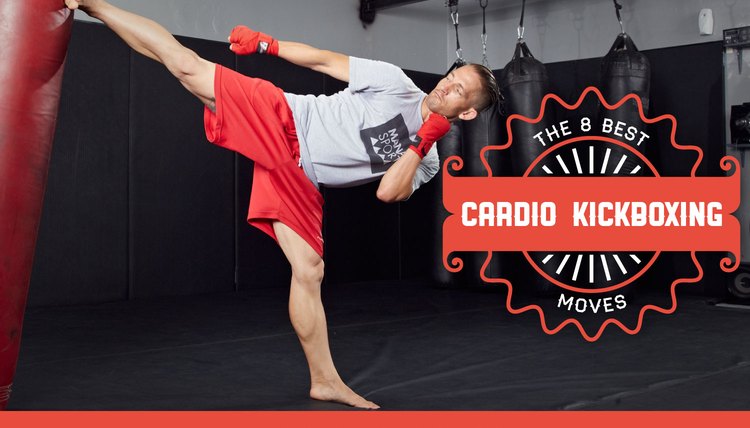
Kickboxing is one of the most taxing workouts you can do -- both mentally and physically. It requires stamina, conditioning, balance, agility and athleticism. And if you include sparring in your workout, it takes your training to a whole new level. But the best part is that you’re actually learning a new skill. What makes kickboxing so great is the high intensity, the lactic threshold training, the fast burst of energy and the interval training and the unpredictable movements, which keep you on your toes (quite literally) and your core engaged. This program was created for a beginner, but these basics are always practiced -- even by the best of the best. Once you master these eight basic moves, the combinations you can put together are endless (but we’ve included four here to get you started). A heavy bag or pads (Thai pads or focus pads) are recommended, since they allow you to throw leather with full power, increasing the intensity of your workout. However, these strikes and combos can be done in front of a mirror or in the office as well (as long as the boss isn’t watching). Make sure you warm up and stretch thoroughly before going too hard, though.
1. Fight Stance
Keeping a good fight stance is important in order to maintain balance in all directions. You’ll use this stance a lot during kickboxing, so building a solid foundation is critical. Just being in a good fight stance and keeping your hands up will take its toll on your shoulder muscles, and keeping your legs slightly bent and constantly pushing off your feet challenges your calf endurance. HOW TO DO IT: Keep your feet shoulder-width apart, hands up and legs slightly bent. Your weight should be on the balls of your feet. When you move, make sure the foot in the direction you are going moves first and that the leg that follows closes whatever distance the first leg opened. For example, if you move forward six inches, make sure your back leg closes six inches to maintain the same fight stance.
Related: Benefits of Cardio Kickboxing
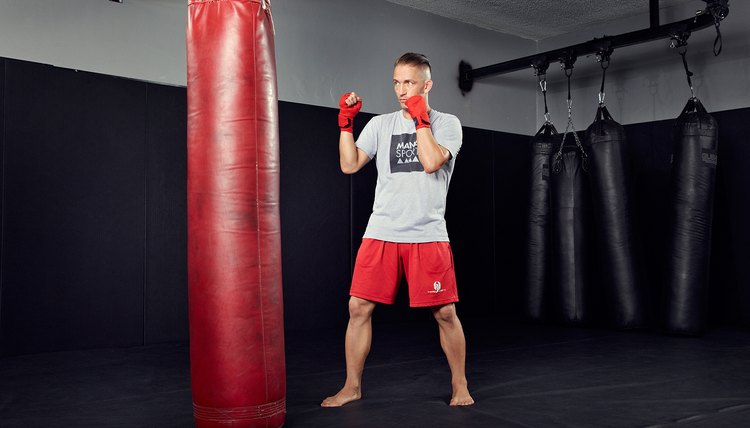
Travis McCoy/travismccoy.com
2. Jab
The jab is the punch thrown most frequently. Why? Because it has the shortest distance to travel from point A to point B. It’s also considered the punch that’s the least risky to throw. The jab incorporates the shoulder muscle and triceps, but also your core and obliques because of the rotational movement of your torso. HOW TO DO IT: Starting in your fight stance, let your front hand travel out in a straight line, making contact with the first two knuckles (knuckles of index and middle fingers). At the same time, rotate your shoulders almost like you’re reaching out to grab something that’s slightly too far away from you. Keep your other hand up by your face. Rotate your hand, so that by the time of contact, your palm is facing downward. Return to fight stance.
Related: Get Into Fighting Shape With These Krav Maga Moves
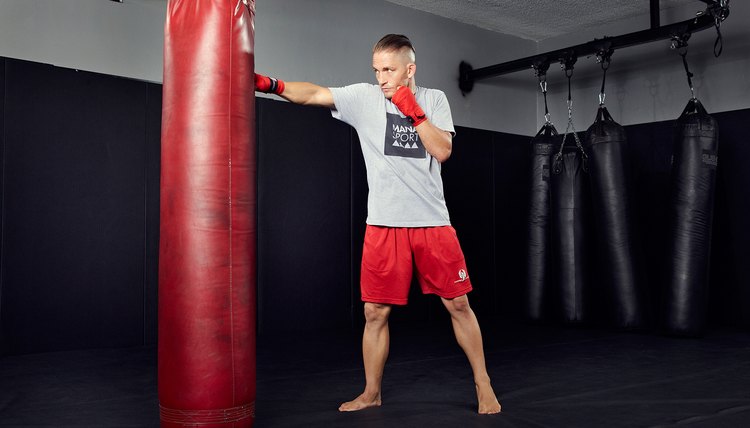
Travis McCoy/travismccoy.com
3. Straight Right
The straight right travels straight out, just like the jab, but it becomes much more powerful because there is a lot of additional rotation in the hips. It’s also considered more risky in a fight, since your arm crosses the midline of your body. Because it’s more powerful, it also uses more energy. Here, you are working your right shoulder and triceps as well as including a lot of core and oblique engagement. HOW TO DO IT: From your fight stance, keep your elbows close to your body. As your right hand starts traveling out toward your opponent’s face (or, more likely, the bag), make sure your left hand stays up to protect your face. Pivot on the right foot to maximize range and power. Rotate your shoulders and make contact with your first two knuckles.
Related: How to Strengthen Your Wrists for Punching
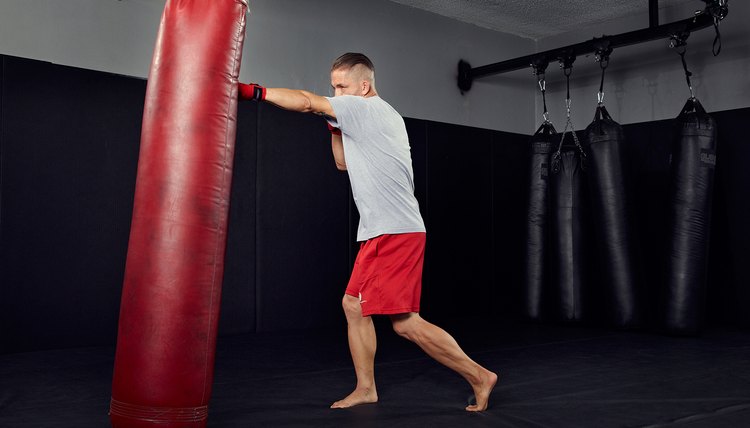
Travis McCoy/travismccoy.com
4. Hook
The hook is an even more powerful punch than the first two because the arm is more connected to the body. The hook involves even more core and oblique work, due to the extra rotation in the midsection. It also fires up the biceps, chest muscles (pectoral) and back (latissimus) muscles when executed correctly. HOW TO DO IT: Start in fight stance. Make sure there is a 90-degree angle in both the shoulder and elbow joints to maximize the power in the punch. Pivot on the same-side foot. In other words, if you throw your left hook, pivot on your left foot; if you are throwing your right hook, pivot on your right foot. The opposite hand should stay up to protect your face. Again, make sure you keep your wrist firm and make contact with the first two knuckles.
Related: 12 Workouts To Improve Your Mood
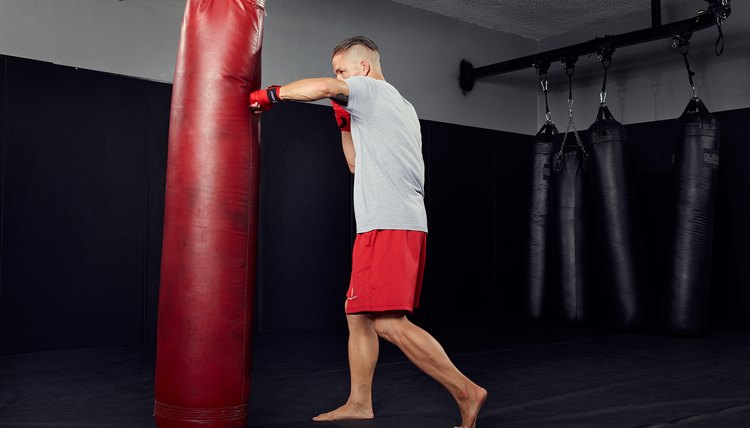
Travis McCoy/travismccoy.com
5. Uppercut
The uppercut is another powerful punch, since it has a little shorter range than some other punches and is more connected to the body. Here, you involve the same muscles as previous punches (triceps, shoulders, back and chest), but you also involve the leg muscles, since there’s a quick dip to start off the motion in order to put more power behind the punch. HOW TO DO IT: From your fighter stance, start the motion by dipping your legs to about a quarter of a squat. Turn your palm toward your body when you strike the bag, as if you were holding a mirror in your hands and looking at yourself. There should be approximately 90 degrees in your elbow joint, although it’s not mandatory (it’s obviously more important to land the strike).
Related: The Best Kickboxing Workout DVDs

Travis McCoy/travismccoy.com
6. Front Kick
Best part of kicking -- aside from being so much fun -- is that it increases the energy expenditure of the workout tremendously, since it involves bigger muscle groups that need more oxygen. The front kick involves your quad muscles, glutes and hamstrings. HOW TO DO IT: Start in fight stance. Make sure you chamber your knee to initiate the movement. Your knee should be straight but not locked out to prevent hyperextension when you strike the bag. Then, at the same time as you extend the knee joint, make sure you thrust your hips forward. You should be making contact with the ball of the foot on the bag. Return to your fight stance.
Related: How to Do MMA Kicks

Travis McCoy/travismccoy.com
7. Round Kick
The round kick is one of the most powerful kicks in kickboxing. It involves quads, hip flexors, glutes and hamstrings. And, due to the rotational movement, it also involves your abdominals and obliques. Lastly, it incorporates the calf muscles, since you come up onto the ball of the foot as you make contact with the bag. HOW TO DO IT: From your fight stance, start the movement by driving one hip and shoulder forward. Chamber your knee and start the rotational motion of the hip and shoulder by pivoting on the base leg. Extend the knee joint in order to increase the acceleration and maximize power output. Note: By the time you make impact (with your shin) the toes of the base foot should have rotated at least 90 degrees.
Related: Sign Up to Receive the FREE LIVESTRONG.COM Weekly Newsletter!
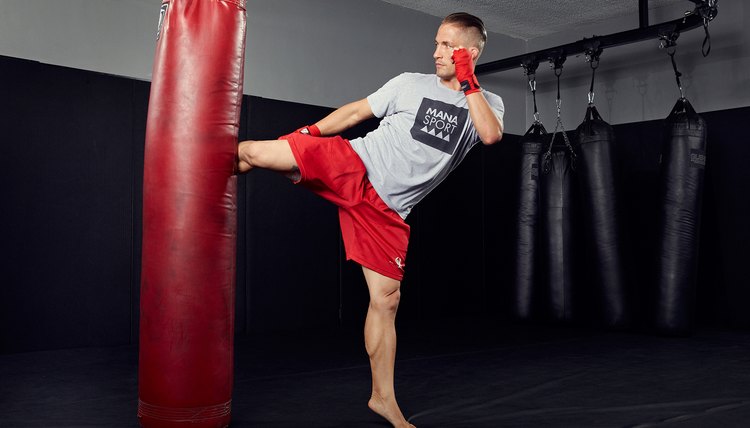
Travis McCoy/travismccoy.com
8. Knees
The knee is another powerful strike. Knees incorporate the same muscles as the front kick, just less of the quads and more of the hip flexor (psoas). As in all the previous strikes, it involves a lot of core, glutes and hamstring, although slightly less obliques because there is no rotation on a straight knee. HOW TO DO IT: From fight stance, drive one knee up and forward, almost as if you were going for something in between a high jump and a long jump. Bring your heel toward your butt in order to create a triangle with a sharp edge. Thrust your hips forward while keeping your hands up (for protection -- do not create bad habits). Make contact with the knee cap before returning to your fight stance.
Related: The Cardio Abs Workout

Travis McCoy/travismccoy.com
Putting It All Together
It’s important to remember to keep good form on all combos. Naturally, form will not be perfect as you increase your speed. From both a workout as well as a fighting perspective, it’s good to vary the speed and power on combos. For example, do each combo 10 times quickly, then do them 10 times really hard. Or try one round fast and one round hard. A round is usually two or three minutes, depending on your level of athleticism. It’s important that one strike flows directly into the next to make it a single, fluid combo. Lastly, remember that there is no end to combinations. Once you learn the basics, you can put together your own!
Related: Track Your Workouts and Meals on LIVESTRONG.COM's MyPlate App
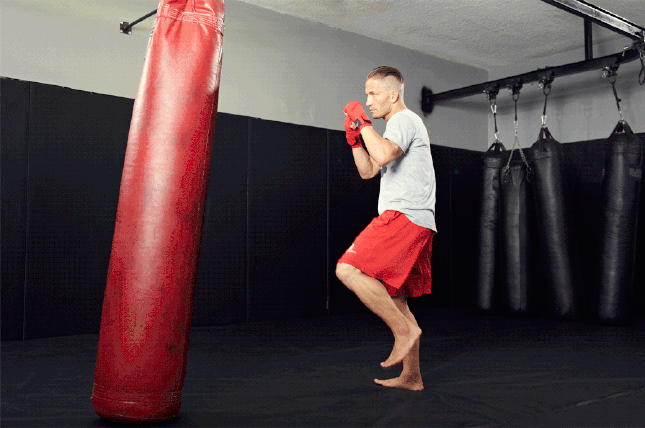
Travis McCoy/travismccoy.com
COMBO 1
This first combo uses four of the moves you've just learned: 1. left jab, 2. right straight, 3. left hook, 4. right round kick
Related: These 12 Moves Will Get You Washboard Abs - We Show You How!
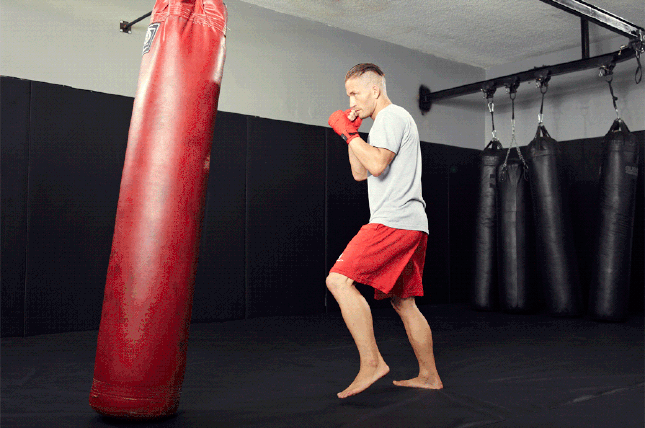
Travis McCoy/travismccoy.com
COMBO 2
This is a simpler combo, but really targets your abs: 1. left jab, 2. right straight, 3. left knee
Related: 10 Body Fat Burning Moves

Travis McCoy/travismccoy.com
COMBO 3
Get ready for lots of kicks in this combo: 1. left front kick, 2. right straight, 3. left hook, 4. right round kick
Related: The 15 Toughest Do-Anywhere Workout Moves
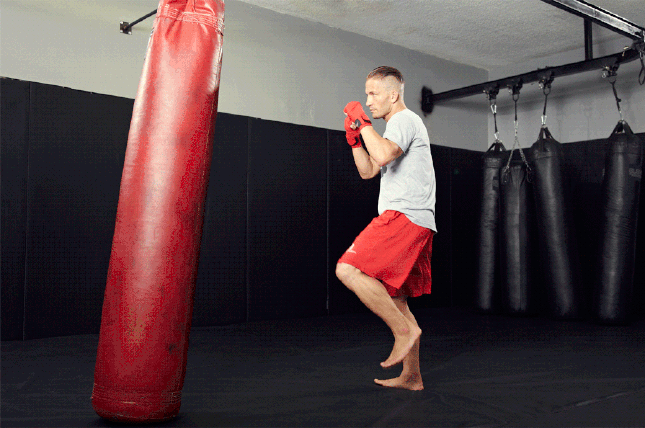
Travis McCoy/travismccoy.com
COMBO 4
And one last combo to practice before you start creating your own: 1. right straight, 2. left upper cut, 3. right round kick, 4. left front kick
Related: The 17 Most Effective Fat Loss Moves - No Equipment Required
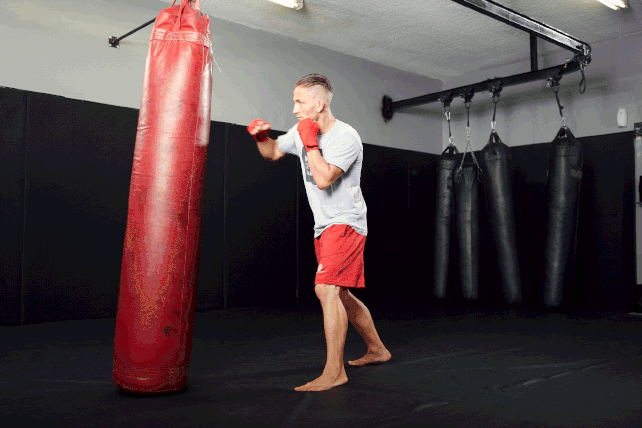
Travis McCoy/travismccoy.com
What Do YOU Think?
Have you ever done cardio kickboxing before? What are some of your favorite moves and combos? Are there any that you would add to the list? If you’re new to kickboxing, which of these moves are you excited to try? Which moves do you think would make the best combos? Share your thoughts, suggestions and stories in the comments section below!
Related: 14 Moves to Build the Strength and Stamina of an MMA Fighter
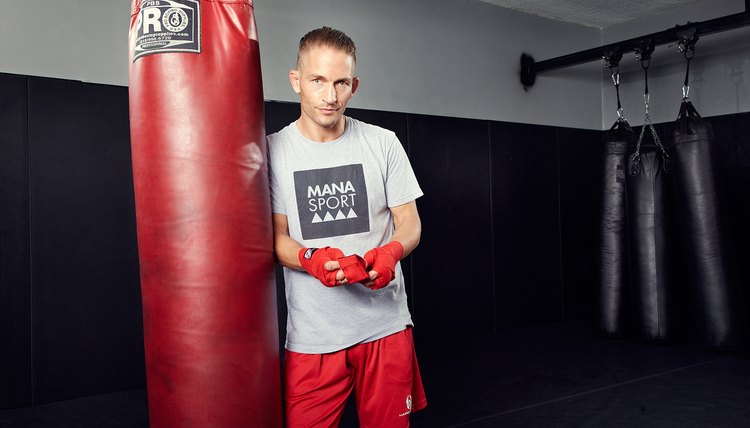
Travis McCoy/travismccoy.com
Writer Bio
Marcus Kowal is the CEO and owner of Systems Training Center in Los Angeles and YourKravMaga.com. He earned his master’s degree in sports management at Cal State Long Beach. Marcus is a professional MMA fighter, kickboxer and a Golden Gloves silver medalist. In addition, he is a 2nd degree black belt in Krav Maga, the author of the book "Life Is A Moment" and founder of Liam’s Life Foundation.
